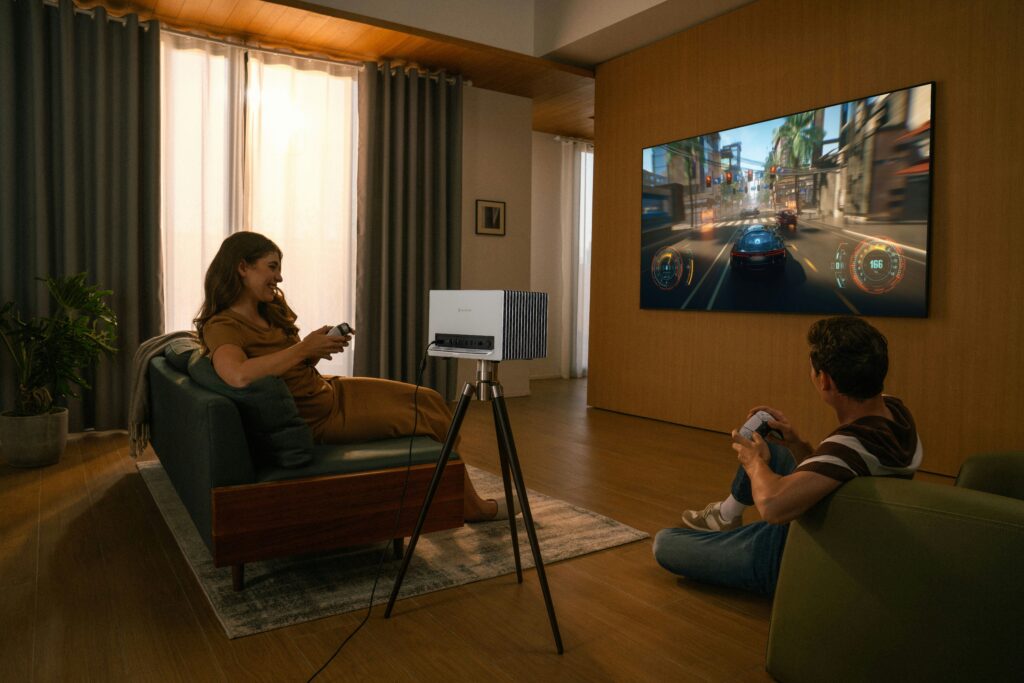In the fiercely competitive world of consumer electronics, display technology stands as a cornerstone of home entertainment. For years, the choice for premium televisions largely boiled down to two formidable contenders: OLED (Organic Light-Emitting Diode) and QLED (Quantum Dot Light-Emitting Diode). While both promise stunning visual experiences, their underlying technologies and resulting picture qualities differ significantly. Understanding these distinctions is paramount for consumers looking to invest in a new smart TV.
OLED technology, primarily championed by LG and a growing number of manufacturers, is renowned for its self-emissive pixels. This means each pixel can turn on and off independently, producing perfect blacks and infinite contrast ratios. The result is an unparalleled level of detail in dark scenes and vibrant, true-to-life colors. Recent advancements in OLED panels, such as brighter sub-pixels and improved longevity, have made them even more compelling, with new models pushing peak brightness levels that once favored QLED. As of late 2023 and early 2024, the market has seen a wider adoption of OLED across various price points, making this premium technology more accessible than ever before, often featuring in top-tier gaming monitors and professional displays as well.
On the other side of the spectrum, QLED technology, predominantly developed and marketed by Samsung, utilizes a Quantum Dot filter to enhance the brightness and color volume of a traditional LED-backlit LCD panel. QLED TVs excel in brightly lit rooms, offering superior peak brightness that allows highlights to pop and colors to remain vibrant even under direct light. Samsung’s continuous innovation in QLED has led to technologies like Neo QLED, which incorporates Mini-LED backlighting to offer more precise local dimming zones, significantly improving contrast compared to older QLED models. While they don’t achieve the perfect blacks of OLED, the sheer brightness and color intensity make them incredibly appealing for certain viewing environments and content types.
Picture Quality: A Head-to-Head Comparison
When evaluating picture quality, several key metrics come into play. OLED TVs inherently offer superior contrast thanks to their perfect blacks, leading to a more dynamic and immersive image. This is particularly noticeable when watching HDR content, where the range between the darkest and brightest parts of the image is critical. The individual pixel control also contributes to wider viewing angles without significant color or brightness degradation.
QLED TVs, conversely, often boast higher peak brightness levels, which translates to a more impactful HDR experience in very bright scenes and better visibility in sunlit rooms. Their expanded color volume, thanks to quantum dots, means they can reproduce a broader spectrum of colors at higher brightness levels. However, because QLEDs still rely on a backlight, they are susceptible to “blooming” or “halo” effects around bright objects on a dark background, although Mini-LED technology has largely mitigated this issue in premium models.
Gaming and Response Times
For gamers, response time is a critical factor. OLED panels generally have near-instantaneous response times, leading to incredibly smooth motion handling with virtually no ghosting. This makes them a favorite among competitive gamers. Many modern OLED TVs also support advanced gaming features like Variable Refresh Rate (VRR), Auto Low Latency Mode (ALLM), and 4K at 120Hz via HDMI 2.1, ensuring a cutting-edge gaming experience. For more insights on optimizing your gaming setup, you might find our article on Smart Home Gadgets for the Modern Enthusiast helpful.
QLED TVs have also made significant strides in reducing input lag and improving response times, with many high-end models now rivaling OLEDs in this regard. While they may not quite match OLED’s pixel-level speed, the difference is often negligible for most casual and even many serious gamers. QLEDs also support the same suite of HDMI 2.1 gaming features, making them a strong contender for console and PC gaming setups.
Durability and Longevity Concerns
Historically, OLED technology faced concerns regarding “burn-in,” where static images displayed for extended periods could leave permanent impressions on the screen. While manufacturers have implemented various technologies (like pixel shifting, logo brightness adjustment, and screen refresh cycles) to largely eliminate this risk for normal usage, it remains a point of consideration for users who display static content for extremely long durations. Modern OLED panels are much more resilient than their predecessors.
QLED panels, being based on LCD technology, are not susceptible to burn-in. They are generally considered very durable, and their brightness can often be maintained for a longer operational lifespan without degradation, making them a safe long-term investment for many consumers. For a deeper dive into display technologies and their evolution, you can explore detailed analyses from industry leaders, such as this comprehensive breakdown by The Verge.
The Future of Display Technology
The innovation doesn’t stop with OLED and QLED. The industry is already looking towards MicroLED, a self-emissive technology like OLED but using inorganic materials, promising even greater brightness, longevity, and modularity. QD-OLED, a hybrid technology pioneered by Samsung Display, combines the perfect blacks of OLED with the enhanced brightness and color volume of quantum dots, offering a “best of both worlds” scenario that is gaining traction in premium segments. These advancements suggest that the choice for consumers will only become richer and more complex, demanding careful consideration.
Ultimately, the decision between an OLED and QLED TV hinges on individual priorities and viewing environments. If you prioritize absolute black levels, infinite contrast, and pristine viewing angles, especially for watching movies in a dark room, OLED is likely your superior choice. If maximum brightness, vibrant colors in well-lit spaces, and peace of mind regarding burn-in are more important, a high-end QLED will serve you exceptionally well. Both technologies offer stunning visual fidelity, making your choice a matter of fine-tuning to your personal preferences and budget.

